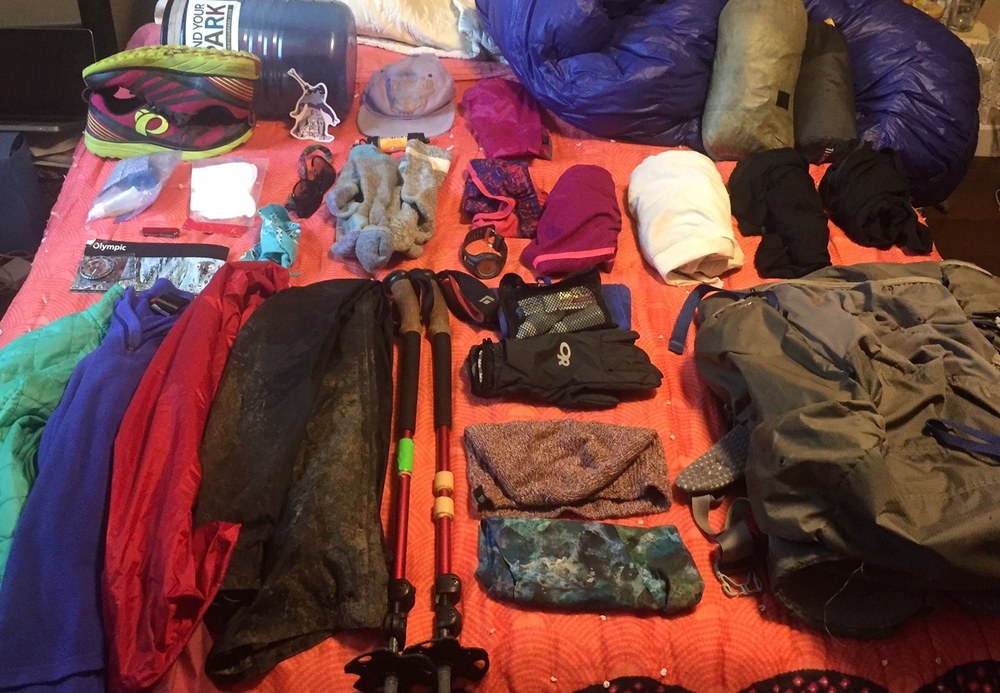
In my last post, I discussed how to take care of your sleeping bag. I received many good questions. Thanks for taking the time to write me! One reoccurring question was about my method for storing a sleeping bag when backpacking. As promised, I will talk about that as well as other tips and tricks for preparing for an overnight trip in any season.
Organizing Gear: Grouping Method
Before putting anything into my pack, I like to organize my gear on a flat surface into four groups:
- Camping
- Clothes
- Necessities
- Trip specific gear (such as: ice axes, binoculars, skis, etc.). Not discussed in this blog since it will vary by type of trip.
Bonus: you can take a photo and post it on social media to make your friends jealous before you even leave the house!
- Tent / sleeping structure, including necessary equipment like poles, ground cloth, stakes, etc.
- Sleeping bag
- Sleeping pad
- One outfit, which I wear every day
- My always-dry base layers, which I only wear at night or in emergencies and are typically a long sleeve shirt and leggings
- Insulation, which is trip specific
- Outwear, which is also trip specific, but I ALWAYS bring a rain jacket no matter the weather forecast
- Hat / gloves / buff
- Sun hat / sunglasses
- Shoes
- At least two pairs of socks. Socks are the only item I bring duplicates of. Embrace the stink!
- Food / water
- Navigation
- Toiletries
- Electronics
- First aid / repair kit.
Instead of using a stuff sack, I like to keep my food in a plastic bag designed for cooking turkeys in the oven. I highly recommend this. They are inexpensive, sturdy, lightweight, and clear so it’s easy to see what food you have without dumping everything out. In the winter, I include a stove in this subgroup, since it purifies water and provides warm food. During other seasons, I include a peanut butter jar, which I use to cold soak my dehydrated food. I also carry a water purifier, specifically a sawyer mini. I store my water in 1 to 1.5L plastic water bottles. Nalgene bottles are too heavy! I keep my toiletries in a small mesh breathable bag, which I found is better than a plastic bag. It prevents your toothbrush from staying wet all day, which is GROSS.
The navigation subgroup includes my maps, compass, and a watch (battery operated so I know it won’t die). My electronic bag includes my rechargeable battery and cord to charge my Iphone, a pair of headphones, and a headlamp, all of which are stored together in a plastic bag. The items in my first aid kit and repair kit depend on my activity, but are typically stored together in another plastic bag. I recommend freezer ziploc bags, because they are much stronger than normal sandwich bags and can be reused.
Packing your Backpack
- Is this a need or a comfort item?
- Does it have multiple purposes?
- If not, why am I willing to carry it?
Learning to discern what you can leave behind comes with experience. Every time I go out I try to leave a different comfort item at home to see if I really needed it. I also set aside time when I get home to reflect on the gear I brought to make sure everything was used and had an important purpose…after I have had my post-trip meal of course.
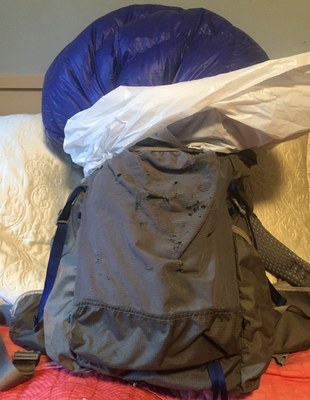
Once I’ve reviewed everything and hopefully narrowed it down, I grab my backpack and put in my secret sauce: a trash bag. Not any ol’ trash bag, but a strong, unscented trash compactor bag. They are lightweight and are essential for keeping my gear dry. I first place my sleeping bag (NOT in a stuff sack) at the bottom followed by my sleeping pad, a Therm-a-rest Neoair. Next, I store the down jackets and/or insulated jackets that I will not use again until camp. I put the rest of my clothes on top, which I keep in a lightweight stuff sack that doubles as my pillow. Finally, I put in my electronics bag. There should still be room to twirl the top of the trash bag and fold it over. Nothing wet goes into the trash bag unless everything is wet, in which case you better be heading to the trailhead or planning to make time to dry your stuff out.
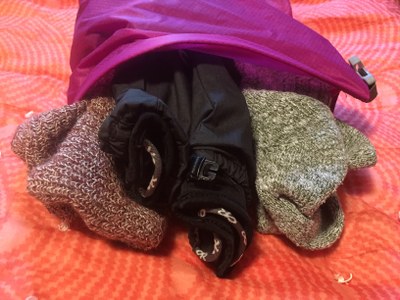
On top of the filled trash bag, I store my rain jacket or shell. I also add my toiletry bag. I keep my maps in the pocket behind my back in a plastic bag or in another easily accessible place on the outside of my pack. My compass, along with a small tube of sunscreen, lip balm, and some snacks go in my hip belt pockets. My tent is stored on the outside of my pack. You can also store it inside your pack, but never in the trash bag. Lastly, I pack my trip specific items. Viola! You are ready to hit the trail.
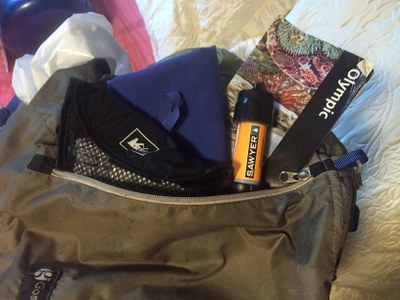
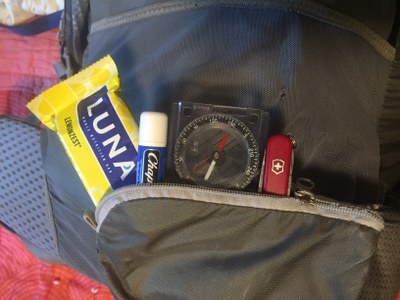
I highly encourage you not to bring just-in-case items. These are typically thrown into the pack at the last minute without really thinking through their purpose. By bringing only what you need, you can practice being mindful of the items you have. This means taking care of your gear and not leaving anything behind. I never start my trip with gear hanging off the outside of my pack. If you must do this, you are probably carrying too much stuff. Everything has a place inside the pack or in specific pockets, and I try to keep them there so that I can easily tell if something is missing.
Questions? Other tips?
Hopefully what works for me will also work for you. Feel free to adjust depending on your gear and trip needs. If you have questions let me know! sarahmccroy@gmail.com.
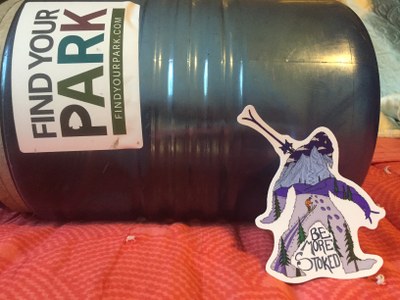
Add a comment
Log in to add comments.Great job Sarah!
 Sarah McCroy
Sarah McCroy